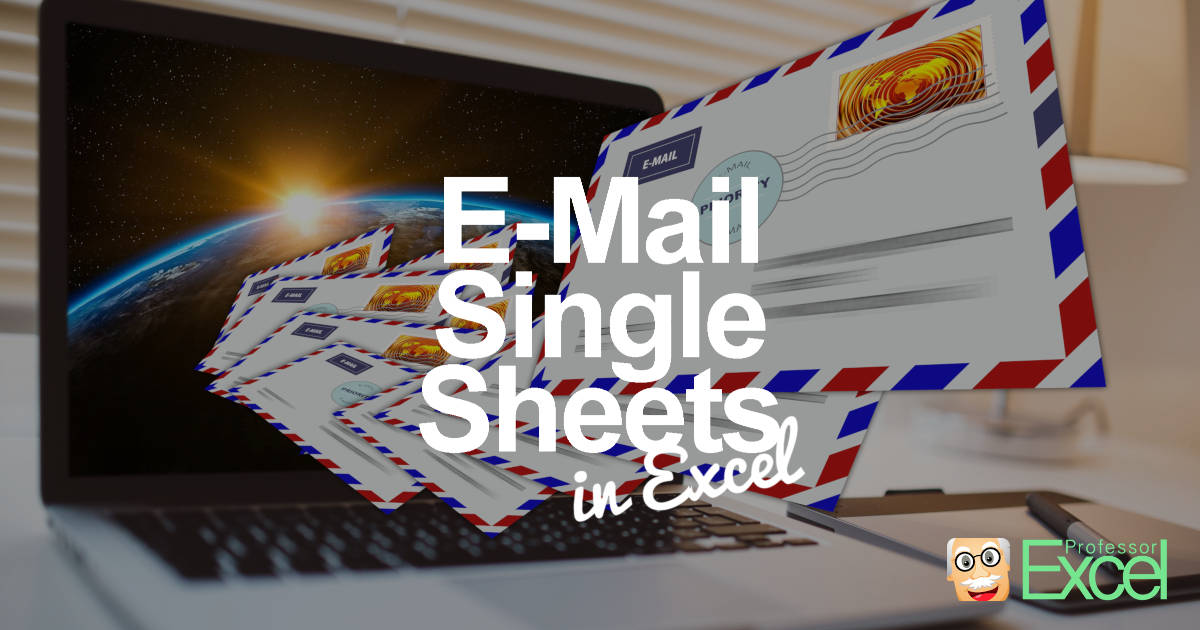5 Simple Steps to Email an Excel Sheet

Managing and sharing data effectively can be a real challenge, especially when you need to email an Excel sheet to your colleagues, clients, or for personal use. Whether you're an office worker, a project manager, or just someone who deals with spreadsheets often, mastering the process of sending spreadsheets via email can streamline your workflow and ensure the integrity of your data.
Step 1: Prepare Your Excel File for Emailing

Before you even think about emailing your Excel sheet, take a moment to prepare your document. Here’s what you should do:
- Save and Review Your Data: Ensure all data is entered correctly. Perform a final review to catch any errors or missing information.
- Format: If necessary, tidy up the spreadsheet’s appearance. Formatting can make your data more readable and professional. Use cell borders, font styles, and colors to highlight important information.
- Reduce File Size: If your file is large due to excessive formatting or data, consider removing unnecessary rows or columns, and reduce image sizes if you have inserted any.
After you’ve made these adjustments, save your Excel file. It’s always a good practice to keep the file size manageable for email.
Step 2: Choose the Right Attachment Format

Excel can save files in various formats. Here’s a quick guide to help you decide:
- .xlsx: This is the default format for Excel 2007 and later versions. It supports all Excel features, macros, and charts.
- .xls: Older Excel format used before Excel 2007. It has limitations in terms of functionality.
- .csv: A universal text-based format. Good for basic data transfer but loses all formatting and formulas.
- .ods: OpenDocument Spreadsheet. This format is used by open-source software like LibreOffice.
🔍 Note: The .xlsx format is typically the safest choice, as it maintains all your data’s integrity and is compatible with most recent versions of Microsoft Excel.
Step 3: Sending Your Excel Sheet via Email

Here are the steps to email your prepared Excel sheet:
- Open your email client.
- Create a new email message.
- In the email window, look for an attachment icon or option.
- Navigate to the folder where your Excel sheet is saved, select the file, and attach it.
- Enter the recipient’s email address, subject, and your email message. Be concise but informative in your email body.
- Review the email once more to ensure everything is in order.
- Send the email.
If you’re using an online email service like Gmail, Outlook, or Yahoo Mail, here’s how you can attach your file:
- Gmail: Click on the paperclip icon to attach your file, or drag and drop the file into the email.
- Outlook: Click on the Attach File button or use the paperclip icon.
- Yahoo Mail: Click the paperclip icon to attach files or click Insert and select File from Dropbox or Google Drive if you’re using cloud storage.
Make sure to choose the correct file and confirm the attachment before sending.
Step 4: Add Notes or Instructions

If you need to provide additional information about how to use the Excel sheet or any changes you’ve made, you can add notes or instructions in the email body:
- Highlight specific cells or rows that need attention.
- Explain the purpose of the sheet if it’s not evident.
- Include any additional steps or clarifications that might be useful.
This will help the recipient to better understand and work with the data you’ve shared.
⚠️ Note: Always remember to include a brief note if your Excel sheet contains sensitive information or instructions on how to view or edit it.
Step 5: Confirm Delivery and Request Feedback

After sending your Excel sheet, consider:
- Checking for Delivery Confirmation: If you’re concerned about delivery, ask for a delivery receipt or check your email’s outbox to ensure it was sent.
- Request Feedback: Politely ask the recipient to confirm receipt or provide feedback on the data, especially if you’re expecting action or follow-up from them.
This step ensures you’re on the same page with the recipient and can help prevent misunderstandings or missed communication.
In this streamlined process, sending an Excel sheet via email becomes a seamless task that not only ensures efficient data sharing but also fosters collaboration and productivity. By following these five simple steps, you can send your spreadsheets confidently, knowing that your data will be well-received and properly understood. Whether it's for personal use or professional purposes, this guide can help you master the art of emailing spreadsheets. Remember, taking a little time to prepare, choose the right format, and provide clear instructions can make a big difference in how effectively your Excel sheet is shared and utilized.
What file format should I use to email an Excel sheet?

+
The .xlsx format is recommended as it maintains data integrity and is widely compatible with most modern versions of Excel. Other options like .xls, .csv, or .ods can be used depending on your specific needs.
How can I reduce the file size of my Excel sheet?

+
To reduce the file size, you can delete unnecessary data, remove excess formatting, compress images, and save the file in a more compact format like .xls if compatible with your needs.
Is it safe to send Excel sheets with macros via email?

+
Yes, but be cautious. Macros can pose security risks if they contain malicious code. Always ensure your macros are from trusted sources, and consider converting macros to VBA code within the Excel sheet for added security.



